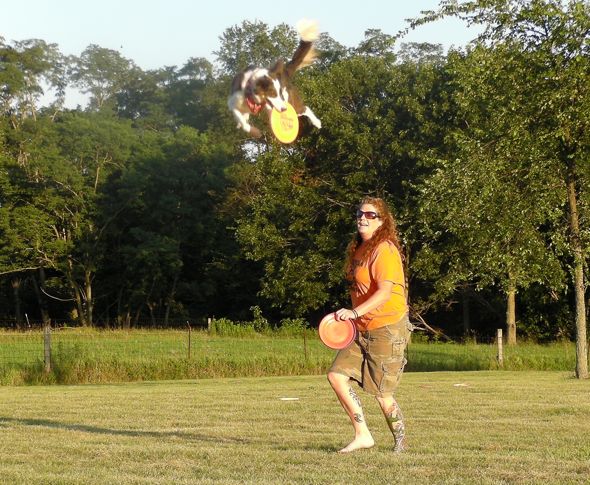
Judging Canine Athleticism
I recently got a question from a friend about judging the ‘Canine Athleticism’ category that we find in almost all of the organization’s judging systems.
This is actually Apryl’s Area of expertise and we’ll hear from her later, but I have opinions on the topic and would love to share them with the disc dogging community.

Personal Preferences of Play Doesn’t Matter
Disc Dogs are Athletes and athletes have strengths and weaknesses. Each dog should be judged as an individual on his or her performance on the field independent of the judges personal biases like breed, structure, and other personal preferences. This is not to say that judges should not be able to apply their knowledge and understanding towards judging the canine athlete, it is just to say that the personal biases of a judge should not interfere with assessing the athletic ability of the dog.
So, let’s say a judge has played with many a BIG leaping dog, and has a preference for that type of dog. Not all dogs are BIG leapers. You can have a phenomenal athlete that doesn’t get BIG air. There is still speed, agility, style, drive and focus that can be applied to the canine athleticism category.
The same goes for judges who value any one of the athletic attributes mentioned in the above list. Just because your dog, your friend’s dog or people who you admire’s dogs’ play the game in a fashion that you like doesn’t mean that is the only way the game can or should be played.
Keep an Open Mind
I guess what I’m saying here is that judges should keep an open mind when it comes to judging the canine athlete.
I’ve had the privilege to play with many different kinds of dogs: BIG leaping Kimo’s, EZ Ryder’s and Si’s, Speedy Rokalele’s and Tycer’s, Smooth and Stylish Kiva’s and Kimo’s, and many other talented canine athletes. I also appreciate the various different kind of athletes in sport. I don’t see the Big Fat linemen on a football team – I see 330 pound monsters who can bench press a car and run a 4.6 forty yard dash – that’s impressive athleticism. Just because the guy doesn’t have great hands, and might not be able to reverse dunk a basketball doesn’t mean he’s not a great athlete.
That is the kind of viewpoint that judges should approach judging from. Not every dog is a fast, drivey and agile border collie or a BIG leaping Aussie. I’ve seen Newfie’s play that were stellar athletes.
Execution is Not Your Concern
The Canine Judge is judging the canine. If the dog is missing discs because he’s not driven enough to put the kill on the disc, or his bite is lacking, then that is your concern, but terrible throws or the effects of gale force winds should not impact the dog’s score.
Of course if the dog winds up unable to perform as an athlete because the handler drops the ball, the throwing is bad, or the routine can’t get rolling due to environmental conditions, the judge has to judge the performance on it’s merits, but the point remains that a dog could, in theory, get a very nice canine athleticism score without catching a disc, and a dog can have a pretty low canine athleticism score even if he catches all of his discs.
Drive and Arousal
Just because a dog is flying around like crazy, doesn’t mean she has drive. Many, many trainers mistake DriveDrive is focus and energy applied towards work. There are many kinds of Drive: social drive, tracking drive, prey drive, bite/kill, stalking, and food to name a few. Social drive, prey drive, and... More for Arousal Arousal is a general excited state of being that is often mistaken for Drive. Door jumping, wining, pacing, hyper-vigilance, barking, biting and nipping, and a host of other high energy behaviors can be... More.
Arousal is a general excited state of being that is often mistaken for Drive. Door jumping, wining, pacing, hyper-vigilance, barking, biting and nipping, and a host of other high energy behaviors can be... More.
Drive is energy, focus, and desire applied towards work. Arousal is just energy and action. They are two entirely different concepts that are too often thought to be the same.
A dog that flies around biting hands, discs, and blades of grass does not have high drive, she is highly aroused. A highly aroused dog is not necessarily going to lose canine athleticism points, but she should definitely not be rewarded for her ‘High Drive’ if arousal gets in the way of athletic performance. Good Drive does not get in the way of athletic performance.
Apples to Apples
Canine Judges should keep open mind on breeds and their relationship to other dogs of that breed (or size and shape). Comparing a Border Collie to a Newfie on a raw, objective performance level is not quite fair. It should be more like a pound for pound comparison. The Border Collie runs 38 miles per hour and jumps 36 inches in the air. The Newfie runs 18 MPH and jumps 12 inches off the ground. That’s triple the performance. Raw objectivity could mean that the BC gets 9 points and the Newfie gets 3 points. That’s not how it should work. That’s apples to oranges.
How did the dog move in relation to other dogs of his breed? How nimble was she in relation to a similar sized dog. Did she play the game with style? Did he work hard? Did the dog look good? Was she safe?
Compare apples to apples, not apples to oranges. Judging disc dog freestyle is, and always will be, subjective. Comparing Newfies to Newfies or Newfies to Berners gets far closer to objective scoring and to the spirit of our game than comparing Newfies to Border Collies.
Performance not Potential
It’s not fair to give an 8.5 to a dog that you know is an 8.5 athlete, but wind conditions, poor throwing, an off day by the dog or some combination of these issues pushed the level of performance down to a 6.5. The job of a judge is to judge performance not potential.
This is pretty hard. In fact, the benefit usually goes towards the dog, which is fine, but judges should be careful that they actually watch and score what goes down on the field, not what could have or should have been.
Flailing is Falling
An old maxim in performance sports is to make the easy stuff look hard and make the hard stuff look easy. It’s a great phrase, one that I really understand as a former springboard diver and diving coach. A diver is supposed to make the easy dives look as if they are hard and make the near impossible dives seem easy.
The thing is, you wouldn’t get very far as a diver if you were flailing around on your required dives, regardless of how hard they wind up looking.
When a dog flails around in the air on a well placed disc, it should have a negative effect on the canine athleticism score. Herculean efforts to make a catch of a poorly thrown disc or a wind effected throw that require some reorientation in the air (flailing) may or may not be beneficial to canine athleticism.
Smooth and confident movement is an important part of judging the canine athlete.
Score from 1-10
Something that I personally use for my scoring of any judged event that has a 1-10 scoring system is a diving scale:
- ½ – 2: Unsatisfactory
- 2½ – 4½: Deficient
- 5 – 6½: Satisfactory
- 7 – 8: Good
- 8½ – 9½: Very good
- 10: Excellent
Wrapping Things Up
Judging is a great way to wrap your head around the game of disc. Nothing will teach you more about what judges are looking for than getting on a panel and doing the job. It’s a great teaching tool and learning experience for players.
This is the first of many discussions we plan to have on judging the game of disc. If you have any questions or comments, please share them in the comment section below.





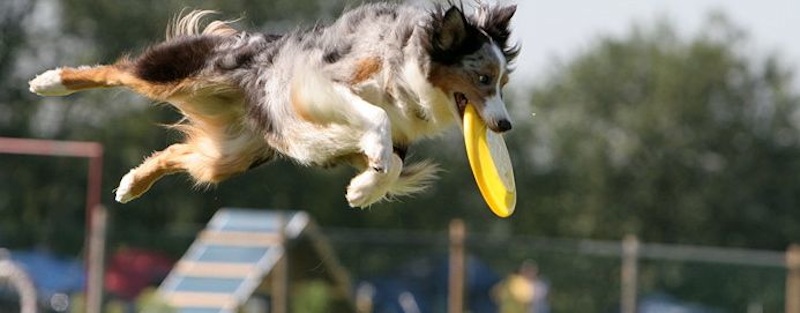
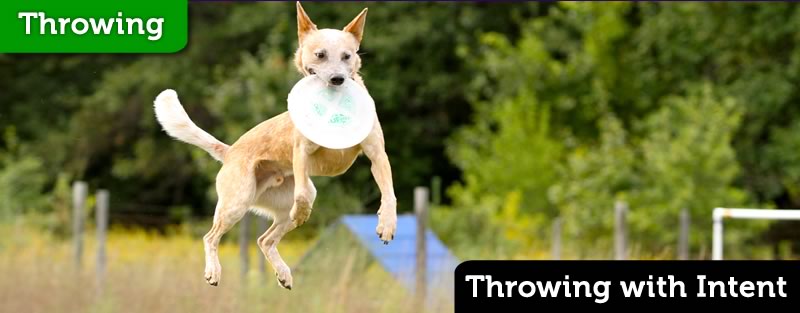

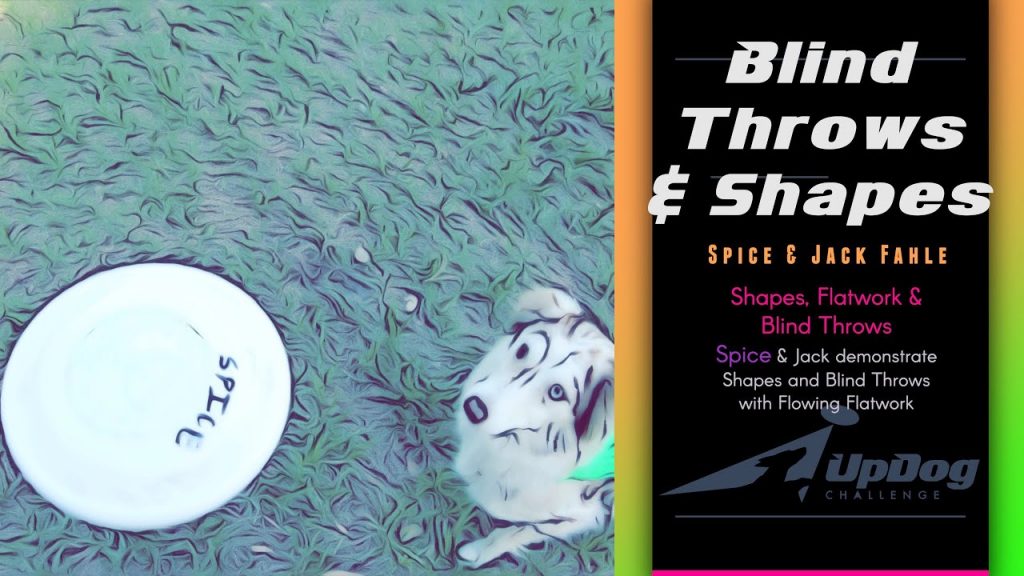
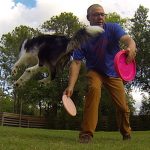
This is a good article Ron, you make a lot of good points (execution, performance vs potential). I especially agree with comparing apples to apples and with not bringing your personal preferences into it. That’s probably easier said than done sometimes, but it is what we should strive for.
I think there should be more judging clinics to help people learn about judging freestyle, especially for folks who have never judged before but would like to get involved. Clinics that teach the same judging concepts consistently would also give us more uniformity nationwide in freestyle judging.
Thanks, Heather.
I also think there should be more judging clinics, but I also think there should be more talking about the game of disc in general – critical examination of playing styles and techniques – Youtube has been an awesome tool, but learning through mimicry and observation has kind of killed off technical and critical discussions…
“Wow! Cool! Great Job…” or ‘hit the ‘Like’ Button’. Anything else is unsafe or hard.
We’ve got a ton of footage out there at our disposal. It’s just a matter of getting people to take the time to learn, and to realize that the game of disc is fascinating to talk about.
Thanks again for reading, Heather, and thanks for those awesome updates from the Skyhoundz Finals.
Peace!
Wow thanks for sharing this. As the owner of a dog who rarily gets all 4 off the ground unless she’s vaulting, I really enjoyed reading this. I often feel we get scored lower because she’s not an impressive leaper, and I get frustrated as she always stays in the game the entire routine and she’s a scrappy little thing when it comes to getting her disc. My dog is an amazing athlete, especially compared to other dogs her size/breeding.
On one hand it’s made me step up my game to think of ways to make her look good and to increase our “wow” factor through tricks. All of the judges w/in our club on our different pages and are mostly old school. I’ve been told they wont score tricks(scoots, stalls, and other positioning tricks) period, some say they count them only if they happen concurrenlty with a catch. Some count them if they conclude in a catch. I say at the very least they should contribute to artistic impression/wow factor. I will say that every judge I’ve ever had has been happy to talk to me about my routine and to help me to fine tune things, which is always greatly appreciated.
I think judging clinics would be an awesome addition for both competitors and those that are interested in judging. Hmmm maybe some distance classes based on videos. hint hint.
Thanks for this post Ron! I’d love to hear more on judging topics!
It is interesting how you approach the Apples to Apples part, although it’s a very common one. You state correctly that judging Freestyle is subjective. It’s per definition subjective, and it should be if you want to be be able to take every aspect of athleticism into account. Therefor, subjectivity is needed to keep an open mind.
That being said, there is a clear demand of structure and transparency by competitors, which limits you as a judge to a certain extend. Coming to objectivity, you say that it would be incorrect to compare Border Collies to Newfies, or apples to oranges.
As a judge, it is your task to differentiate the capabilities of dogs you see at that particular time, ofcourse in respect to the current performance, not the potential. The key part in this is to make a clear difference between ALL dogs, and you will have to point a winner, but also a loser. That is what judging is about: pointing out the difference and score them accordingly. This means that you will have to disappoint some players in order to give others the credits they deserve. You’re a judge, not a mental coach! You have to be fair and strict at all times.
A team that enters a competition, has the free choice to do so or not. This means he will have to take any handicaps for granted, and so is the breed he or she decides to play with and he or she knows that there may be breeds out there that are ‘better’ in an absolute point of view.
Ron, you state that you will have to compare apples to apples and oranges to oranges. This is not possible when it is your task to differentiate all dogs within the same contest, within the same division. It is inevitable to compare apples to oranges. This shouldn’t be a problem, as all competitors accepted this fact as they entered the contest, knowing they could face more capable breeds.
It is not impossible either as long as you keep in mind that the essence of your job is to differentiate every dog within the same division. You can compare apples to oranges if ‘fruit’ is the criterium.
The critiques to this subject usually come from the ‘newfie-owners’ with the argument that they would stand no chance against the Border Collie. This sounds reasonable, but might be unfair from the Border Collie perspective. An analogy might help to make this clearer:
Say player A (the newfie) can throw a maximum distance of 20 yards, while player B (the Border Collie) can throw over 60 yards. If they enter a distance event, there is no doubt who is the better thrower. Say player A throws the full 20 yards, but player B throws ‘only’ 40 yards. Even if player B did not give all he’s got, he is still without doubt the winner.
Would it be fair to give player A maximum points at 20 yards, but player B at 60 yards? Or does player B deserve 3 times the score of player A?
If you’re comparing these players directly (i.e. within the same division), you will have to judge them on their lowest common denominator, which is ‘fruit’.
There is a very thin line between absolute measurements and subjectivity, and I believe you cannot separate them entirely. Sure a big leaper will make you subjectively think it is a great athlete, which is OK I think and has nothing to do with keeping an open mind. However, your comparison of speed and leaping height between the Border Collie and the Newfie is a little extreme when it comes to objective judging. I really want to stress that I do NOT mean to judge this way!
Judging the newfie as a mental coach might be kind to them, but it damages the credits that the Border Collie type deserves. The winners credit is only worth as much as the difference is to the loser, the rest is a deadweight loss.
Adriana Wrote –
I’ve been told they wont score tricks(scoots, stalls, and other positioning tricks) period, some say they count them only if they happen concurrenlty with a catch. Some count them if they conclude in a catch. I say at the very least they should contribute to artistic impression/wow factor. I will say that every judge I’ve ever had has been happy to talk to me about my routine and to help me to fine tune things, which is always greatly appreciated.
—
I don’t even know how that’s possible. 😉
This kind of discussion usually comes up when judging the ‘team’ category of the judging system in question, in fact, I don’t think it’s ever come up in discussion about judging dogs.
If the dogs are doing scoots that displays athleticism and while it may not be the entire score or even the lion’s share, moves that lead to catches or the catching process need to be looked at. If not, then the way the dog moves to get the disc – how he runs – is not allowed to be judged either.
Of course, I tire of the repetitive and seemingly unending ‘set up’ moves and they won’t sway me to give a good team score but I don’t think they shouldn’t have zero effect or a negative effect unless performed poorly.
The dog should not be punished because of a silly handler. 😀
@Chris – Great points!

What do you do with that?
Seriously?
When I’m talking about apples to apples, I’m talking about a 1-10 scale of what that type of dog is capable of. So you address the judging based upon what is possible for that type of dog.
A 2 Kg yorkie that jumps 18 inches (45cm) is a MONSTER! Sure the dog can’t jump as high or run as fast as the Border collie, but should a totally average border collie athlete be judged far superior to a miniature monster? He’s faster. And leaps 24 inches off the ground, double what the yorkie did. Does that mean that the Border Collie is a better athlete?
I don’t think so.
And at the very top end of that 1-10 scale, there will most assuredly be a sway to the sheer scale of speed, intensity, leaping ability of the monster BCs, Aussies and ACDs out there, but a competitive 7s-8s range should be attainable by exceptional athletes of any breed.
Also, I don’t think that the job of a canine judge is to pick a winner or loser. I think it’s to judge the athletic performance of the animal on the field. Picking a winner and loser is the job of a judge that has responsibility over all of the categories. Judges that are in charge of divided disciplines are not picking winners and losers. They are scoring the part of the game that they see.
I think your apples to apples is in the raw data on the field. Meaning we apply a single standard benchmark to all dogs. I don’t think that’s the way to go. There are too many variables. I think the way to go is to apply what the judge knows about doggy athletics to a size/shape/breed and score them based upon what they are capable of.
Perhaps a yorkie is only capable of an 8 from you as a judge. Perhaps a newfie is only capable of a 7. That’s cool, but I’d rather watch the best yorkie in the world play as a fan of athletics than your average border collie.
How far will you let the ‘open mind’ go? Are there no limitations? Is every talent a dog brings relevant to disc? How much of an athlete is the football lineman on a basketball court?
I totally agree that the monster yorkie is just as much an athlete as the Border Collie. A newfie that can RUN and JUMP might be too. But really, how many of those are out there? That is quite a high expectation for those breeds. Your average yorkie can barely carry a frisbee, the average newfie can barely run.
A Border Collie or ACD is an athlete by average. The mediocre one is the exception here. How will you compare that? Will you set different standards for those breeds, depending on the capability of the average dog within its breed class? Sure is worlds best yorkie better than your average Border Collie, but what about a GOOD yorkie vs. an average Border Collie?
Well, I’ve seen a 300lb man (145KG) reverse dunk a basketball and run to first base (15meters) faster than any man on his team. He was a professional football player.
Of course he did not compare to the professional athletes in skill positions like point guards in basketball or running backs in football, but it was more than impressive, and when it came to the average human athlete he was far superior.
Also, Point guards and Centers in the game of basketball are very different players with different skill sets. Who is the better athlete Shaquille Oneal or Kobe Bryant on a scale of 1-10. I’d say 9.5 or 10 for both. Now how about Shaquille Oneal vs a decent professional point guard.
You might wind up with Shaq still getting a 9.5 or 10 and the average point guard getting a 7.5. Why is this? The average point guard is faster, jumps higher and is quicker and more agile than Shaq, but scores lower? huh?
This is because when you judge athletic prowess you need to measure like athletes.
Who’s a better athlete? A gymnast or a track and field Sprinter? I’d say Gymnast. Many would say a Sprinter. Those are our biases. And when we’re faced with comparing unlike athletes we have to look at their particular skills, strengths and weaknesses. The Gymnast may not be as fast as the Sprinter and the Sprinter may not be as agile as the the Gymnast. Perhaps the Sprinter actually has better agility than the Gymnast or the Gymnast is actually faster than the Sprinter. It happens.
You have to really be careful with those comparisons when you score them 1-10. They are un-like. The raw data are not conclusive.
Then of course there is the performance itself…
A Newfie that runs and jumps and is totally exceptional for a canine athlete of it’s size should score better than an average border collie that doesn’t run well or jump well, even though that average border collie may jump higher and run faster than the Newfie. They are unlike athletes.
What’s more impressive? A 70 Kg Newfie that really jumps and runs or a 15Kg BC that is slower than most BCs on the field today?
Again, Chris, I am not saying that a Newfie should get an 8 because they can chase down a frisbee. Or a yorkie should get an 8 because they can carry one.
I am saying that the Best Newfie or Yorkie you’ve ever seen, a real live disc dog, should probably get a better score than your average border collie.
There are not many of those out there, Chris, you are correct there for sure. But when we see one, we cannot judge them based on the raw data from a performance of an elite BC. They must be judged on their own merits in relation to what they are as a canine athlete.
The goal of the ‘Dog’ judge is not to pick a winner or a loser, it’s to accurately gauge the athleticism of the athlete on the field based upon their performance.
The winner and loser are picked by the compilation of the various scoring categories. Picking a winner is a team effort and is not the responsibility of any one individual judge.
peace!
Your question of, “how far will you let the ‘open mind’ go?” is very fair and valid.
It is a matter of personal preference based upon the judge. It’s just a general principle.
I could ask you the flip,”How far do you let the ‘closed mind’ go?”
Here are some open mind thoughts:
You are looking at raw metrics:
Speed – Meters/Second
What if we add an additional variable or to the equation, namely weight:
Momentum – Meters/Second x KG
Or Power to weight – Power/KG
Generating serious momentum can be an athletic trait, can it not? The force required to get a 70Kg body moving to 22MPH is far greater than the force required to get a 15Kg body moving to 35.
We could also look at size to speed. If the dog is 15cm tall and can run 15mph isn’t that more impressive than a dog that is 55cm tall that can run 35mph?
Again, and I can’t stress this enough, I’m not saying I would give a big dog a great score because he chases frisbee or give a little dog a great score because he can carry one.
But, I can find things to reward different kinds of dogs with that accurately reflect their athletic ability. Every judge does this in every category except execution. The dogs and handlers, styles of play, style of the team, style of the handler, are very diverse across our game. Judges do this all the time elsewhere.
I think though, this part of the discussion is getting past the general thrust of this post. I’ll be happy to continue talking about it, but it seems that we have really fleshed out that idea.
I think we should move on to some elements that may not be so clear to players (and some judges) out there:
Lead Changes
Collection
Recovery
Balance
Drive and intensity
I’ll start a top level thread so we can discuss these things that were not really in the article there…
Nice dscussion. True is I really think a lot about this topic and it is nice to see these opinions.
Ron: Would you also think that if it comes to judging the handler, that you cannot compare e.g. japan players (who in my opinion have geneticly better agility) to e.g. european players? Or it is different with judging player? and than why?
I do not mean this question, just want to know your opinion. THX
Hey Kuba!
Well, handler agility is but one part of the ‘handler’ score. There is throwing, actually handling the dog, showmanship, and probably a couple more. One can be a good handler even if one is not super agile.
But a big guy or girl who moves very well for their size would probably be a bit more impressive. I also remember a little japanese woman all of about 40-45Kg who did a flipping dog catch with a 45Kg Doberman. Pretty impressive.
So I guess there would be some of that, but again there’s so much to judge, the raw athleticism of the handler is not really a big issue.
Of course, when you get closer to the end of that scale, 8.5, 9 and 10, that is going to come into play. I hope this translates well… 😉
Peace,
Ron
Ron, I admire your way with words and the points you made, just wish it was that way in the real world. So, how do we get the people judging to even read this? Seems that’s a real problem. Too many judges feel their way is the only and not to be questioned. Due to human nature there will always be bias towards the judges personal favorites and it you’re not with the cliche crowd, you’ll never score high enough to place with their favorites. Just gets really discouraging to the outsiders who don’t belong to the any club.
Hey there Disc Dogger Fellow!
Today’s players are tomorrow’s judges. There are more an more current players that have the ability to judge in the next few years. This piece is written to open a discussion about judging so we can all get more opinions and information on the gig.
It’s a hard job, but it’s so valuable as a player. I had a lot of crap to say about judging that was immediately pitched out the window about 30 minutes after sitting in that judges chair.
I too, find it amazing that there is not more out there about judging. Not to mention pieces about how the game is played, what kind of games are available to people and what game is being played by which players.
Thanks for the props, Disc Dog Fellow, I appreciate. Stay tuned for the
Hi, great article, Ron, I’m following this discussion with interest. Hope there will be more on other aspects of judging (player, etc.), also the various formats (Skyhoundz, UFO, USDDN) since I have many thoughts and questions about that as well. But to stay focused on this specific topic, dog athleticism: Your distinction between drive vs. arousal is quite important, I think, and really resonated with me because of my recent experience at the European Championship: my Lyra had the highest canine scores of any of my three there (overall scores in canine category in the mid-nines, including a 2.45 in the athleticism category) and yet it was one of the worst performances of her life, both days, but especially Saturday. She was totally wild and unfocused, making some impressive leaps to be sure, but not catching anything (and not because of wind or especially poor throwing). I know my dogs, and her performance was below her usual standard, well below her potential, and inferior to both Olivia’s and Bamm Bamm’s (who were scored in the mid-eights). After reading your article I think what happened is that the canine judge was mistaking arousal for drive.
She has episodes like this, in both disc and agility. Less frequent as she becomes more seasoned and we gain experience as a team, but they still occur from time to time. They seem quite random: I haven’t figured out what triggers them or how to manage/prevent them (maybe a topic for a future article? Would love to hear some tips!). She was in the zone at the EC 2008 (and earned herself an invitation to the Finals) but wild at the USDDN finals a few weeks later. At the latter Apryl was the canine judge and gave her probably the lowest canine score she’s ever had. I was of course disappointed at the time but I suspect now that Apryl quite rightly penalized her for being overly aroused and flailing around, which was getting in the way of her performance.
Re evaluating athleticism using different criteria depending on the breed, structure, size etc…I’m sitting on the fence here for the time being. Willing to keep an open mind, but as a USDDN canine judge would I give better scores to a fast, lithe, big leaper over a slower dog whose paws barely or rarely left the ground? Probably. And I confess I was quite taken aback at the UFO Butch Cassidy Cup to see very high D scores (which I understood to be mainly about the dog’s drive and athleticism) under the DISC system awarded to slow, lumbering and (to my mind) not terribly athletic dogs.
In future discussions, when we get to judging players–should players in wheelchairs be judged a/c to the same absolute criteria as those with the full use of their legs as well as arms? I saw some impressive performances by disabled players at some recent competitions, but how should a USDDN player judge evaluate, say, the field presentation category in this case? Adjust the criteria to the abilities of the player, apply an absolute scale? Clearly someone in a wheelchair cannot make as full a use of the field as someone who can sprint from place to place. But by the same token, neither can an older, slower, heavier player, compared to a fast and agile one.
Great Post, Jean!
I think the Drive vs Arousal issue presents itself in so many places in dog training and dog sports. It’s something that should definitely be talked about not only from a judging standpoint, but from a player and handler’s standpoint as well.
I’ve learned many lessons about this difficult question and continue to learn more as we work with more and more dogs. Managing and diagnosing this is a great topic for another post…
Regarding the size and breed issue, if it’s a nine border collie, there’s going to be smoking speed, agility and perhaps leaping ability. If it’s a nine Aussie, you’re probably going to be looking at a big leaper with a little less agility than the smoking border collie. If it’s a nine ACD you’ll probably have great leaping and drive, but might be lacking in the style department. How do you compare those guys?
They are all not equal.
They show us very similar attributes, the attributes that all of us tend to see in a disc dog, and on a scale that is quite similar.
But, look at that newfie in that pic and now think of the super yorkie. They won’t be there in scale on a raw data, objective criteria. The Aussies, BCs and ACDs probably leap higher and run faster.
But are they 60Kg? Are they 4 lbs? How do you judge a dog that is not an ACD, BC or Aussie if you cannot judge them based upon their own athletic ability, per their breed’s or size’s traditional athletic attributes.
Well, my 20 lb BC doesn’t jump as high as your 44 lb Aussie. Can’t my bad ass 20lb BC who’s almost as fast, almost as big a leaper as your Medium sized Aussie get a similar dog score?
I am not talking about giving an oafish Newfie a 9 because he plays Frisbee. I am talking about giving a 9 to a newfie that is light as air, turns on a dime, and is doing full body overs with their handler (in a safe fashion). A newfie that has those attributes should be scored quite well even if a very nice BC gets an 8.5 with better raw athletic data – 35mph, 1M leaps vs 22 MPH and 30 inch leaps.
I am also not talking about giving a twinkle toes yorkie a 9 because they can carry a frisbee. I am talking about rewarding a yorkie that jumps 30cm into the air and does leg vaults 3x as high as it’s body. Again, compare the raw data – bc 35mph, 1M leaping… yorkie 15mph 12″ leaping (triple over head, perhaps…)
I’ve worked with both these dogs, btw… spectacular athletes, of course not on par with BCs in raw data athleticism, but truly special and gifted athletes that, should they show up on a disc field, are due a fair look by judges.
We’ll take up the handler’s later…
Peace!
Thanks for this article. I fully agree, judging is a challenge and it’s very hard to compare apples with pears in terms of different breeds – all of us have certain things we more or less have an eye upon when it comes to judging but hey, that’s why I’m totally in favor of judge and play tournament styles…
I know there are different mind sets on high-flying dogs… however seeing the pictures at hand used for this article really SHOCKED me!! That’s ridiculous having the dog up in the air two meters or (in this case even higher)! That’s really something I can’t understand – there are easier and more efficient ways of ruining him/her quicker!!
Thanks for responding, Andrew.
I understand your reservations on height. We have them too. Especially in regards to the message it sends to other players. In retrospect, I probably should have chosen another picture for this article for that reason…
Kiva is a huge athlete and this image captures a particularly large vault.
Our dogs have a long and healthy life. Wynde played well until she was 15. Marley played until he was 17. EZ Ryder just caught the 9th longest throw in QUAD history at 11.5 years old – 81yards, with a 1m leap and missed qualifying for the AWI WFs by a half a point. Leilani is nearly 10 and is still rocking out.
On the topic of height…
I’m not concerned with ‘ruining’ Kiva with Big Air. These larger skills get very low reps. I think the real danger of disc play is in repetition, not height. Also I find a very big problem with throwing vaults too low. “Lower is not Always Safer” – Height, placement, repetition and safety – is a standard section in our seminars and camp instruction. I guess I have a new blog entry to write.
If we can, let’s please stay on topic. I appreciate being unable to remain silent about something you believe in, Andrew, and give you props for speaking up here. Point noted, but let’s stay on the topic of Judging the Canine Athlete…
So… as a canine judge… what would you do with this dog? This move, given your belief that it is too high?
Great blog post and great replies. I know there are some judges out there that “get this” but definitely some that don’t. When starting in the sport I assumed all dogs needed to leap big or run like lightning to score well. After a few years of looking at scores vs. performances it became clear to me that at least for some judges that is not the case. I’m glad it’s not that way for every judge because there is a lot to be said for turning tight, adjusting for the disc, etc. I think it takes someone more experienced with a variety of dogs to see it though. Familiarity with other dogs sports might be helpful too. A dog that only gets 2 feet off the ground but has adjusted perfectly to catch the disc to me is better than the one that jumped 5 feet in the air and sailed by the disc without much of an attempt to catch it. That shows great collection, perhaps lead changes and focus on the task at hand (catching the disc). Of course the one that can jump 5 feet and adjust, land safe and turn tight to head the next direction surpasses them all and is the ideal but kudos to the judges that can see the whole picture and not just how high or how fast the dog is going.
I’m glad you addressed the flailing topic… that’s a tough one for some because if the dog flails but lands safe is that a good thing? Or still bad just not as bad as flailing and landing bad?
One other thing – what about landings? At a major competition a few years ago I saw a dog that was a great athlete with tons of drive to kill the disc out of the air but as a result made several very scary catches that caused me to cringe. The dog wasn’t high but the dog was almost overreaching backwards for the disc causing the dogs back to arc backwards and then the dog landed back feet first at an angle which led to impact in that same position. The torque that landing must have put on the vertebra in the lower thoracic region couldn’t have been good. What does a judge do with that? There was no flailing and the dog didn’t crash or crumple. Just curious as to some thoughts on that one as I occasionally see other dogs that do this as well though not to the same degree.
Of course the one that can jump 5 feet and adjust, land safe and turn tight to head the next direction surpasses them all and is the ideal but kudos to the judges that can see the whole picture and not just how high or how fast the dog is going.
Great point, Kat.
As far as flailing goes, that’s a tough call. To Flail or not to Flail that is the question, which could easily morph in to Flail or Fall, as you mentioned. I think this would be totally dependent upon the judges discretion. Was it a bad throw? Did the wind get it somehow? Those could, in theory, be beneficial or at least neutral, but over pursuit, poor judgement on where the disc is, or flailing that comes out of nowhere, I would think would negatively impact the dog’s score.
As far as bad landings go, again it’s the judges discretion. What are the situations that led up to it? Wind? Poor throw? Gap in teamwork?
Also, I would imagine that the crashing rules that various organizations have created would have to come into play.
Personally, I’d rather see judges drop scores accordingly when bad landings or a crashes happens – reduce the score of the categories that played into the problem: Dog over pursues and under protects itself? Knock the dog score down a hair. Handler throws poorly? Hit the handler and perhaps team.
I think that particular area needs some work in our sport from a judging perspective. What does a judge do to scores when the team has already had points deducted for bad landings?
How can you not have poor performance in the landing arena impact the score you give as a judge? If you do, you could wind up costing a player many more points than the crashes should have cost them.
peace
About a month back our local club found itself in a situation where we needed a 4th judge for freestyle. With my dogs in a transitional phase I volunteered for the job not having much judging experience behind me – only 4 or so years of competition freestyle experience. Reading through the blog and comments has really helped me as I’ve judged the “dog” portion of scoring our past two competitions. I’ve made notes each week to myself during the competition about the individual dogs to help me make decisions about scores and I’ve compared my notes competition to competition as I continue to craft my definition of drive and athleticism. Components from many people’s posts have influenced my definition. I think Ron is correct in the fact that a lot more conversation should take place about the sport of disc dogging and the different nuances within the scoring categories. I don’t think it’s necessary for everyone to agree but rather the dialogue help us to reflect on our own definitions, possibly opening our view and questioning our resolve and our beliefs about that topic. Judging will always be subjective and the individuals own thoughts will directly impact scores but by collaborating and sharing these ideas we can positively influence judging. I really appreciate Ron posting this thread and everyone’s additional comments.
What a great post, Jack!
Thanks for taking the time to write it.
Peace